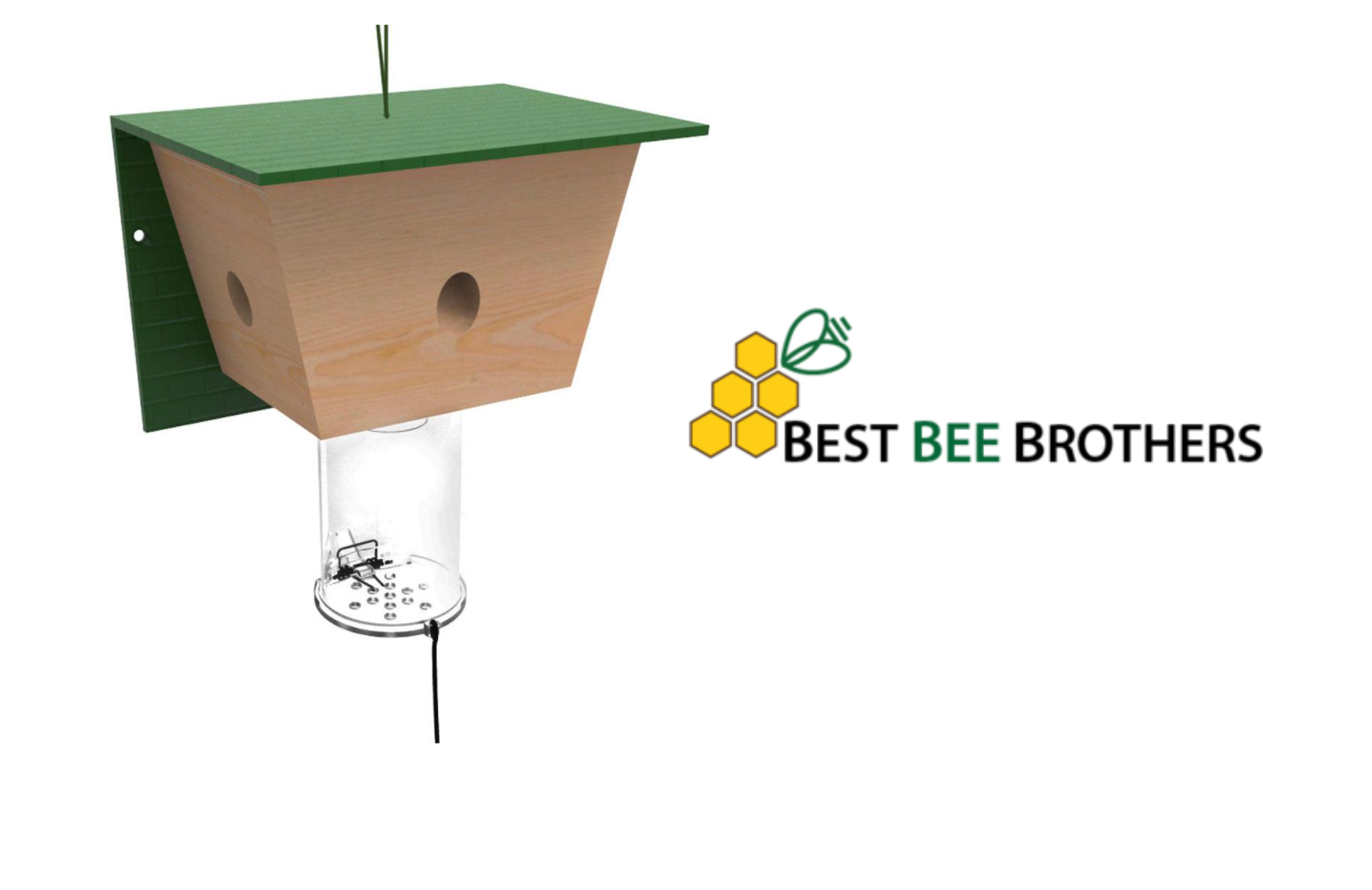Trapping bees while helping the environment might seem counterintuitive, but in this case, Best Bee Brothers are creating a buzz by tackling both of these challenges at the same time!
Bees are essential to many ecosystems and the world’s food supplies, flitting about and pollinating fruits and vegetables that power the entire food chain. However, they can also cause some trouble for their human neighbors… and we’re not just talking about bee stings!
Carpenter bees are the largest native bee in the United States. They are not as efficient at pollination as their honeybee cousins, which are responsible for pollinating 80 percent of all flowering plants, including important food crops. In fact, because of their large size, carpenter bees may “rob” the nectar of some flowers that are too narrow for them to enter. Instead, they use their mouthparts to slit the base of the flower and steal the nectar. This circumvents pollination and allows honeybees that visit the flower afterward to also take nectar without pollinating.
Carpenter bees are solitary bees. Unlike their honeybee and bumblebee cousins, they don’t live in large hives with queens, instead forming individual partnerships and living a more “distributed” lifestyle.
While this makes them less susceptible to hive collapse disorder, it also means they’re calling many more locations home. Unfortunately, many of those locations are in OUR homes.
Living up to their names, carpenter bees love wood, using their strong mandibles to chew away at structural timbers and siding to hollow out space for their eggs. This damage to American homes adds up fast—potentially reaching $5 billion per year—and it often isn’t covered under homeowner’s insurance policies.
Building a better bee trap
To combat this wave of carpenter bee destruction, homeowners in areas with large carpenter bee populations must employ defensive measures to protect the structural integrity of their property. Best Bee Brothers’ Best Carpenter Bee Trap is the leading solution for capturing carpenter bees and doesn’t use harmful pesticides or chemicals to get the job done. Instead, it captures them in attractive wood and plastic traps that bear a strong resemblance to birdhouses.
Best Bee Brothers’ sales have skyrocketed as satisfied customers spread the word about their effectiveness. But all those extra sales also meant a lot more virgin plastic being used to make those traps.
Best Bee Brothers wanted to find a better way to deliver their product’s fantastic benefits to consumers while minimizing their environmental impact, so they turned to Oceanworks to explore their options. Selling hundreds of thousands of units annually, switching to recycled ocean-bound plastic would be truly meaningful from a sustainability standpoint.

Relying on ocean-bound plastic for their traps was an added bonus, as they would not only avoid using virgin plastics, they would also divert tons of plastic from plaguing our waterways and shorelines. Best Bee Brothers started off by ordering 10 metric tons of fully recycled ocean-bound plastic—PP-201155—filling one-half of an 18 wheeler. That's a lot of plastic!
Small change, big results
This recycled ocean-bound plastic was a simple substitution in Best Bee Brothers manufacturing process, but more importantly this recycled material innovation is netting major sustainability results. Using those 10 metric tons of recycled ocean-bound plastic instead of virgin plastic has avoided the creation of 8.71 metric tons of carbon dioxide equivalent and saved more than 55,000 kWh of energy.
By not generating that additional CO2e, Best Bee Brothers saved the equivalent of 980 gallons of gasoline (or 21,884 miles driven by a passenger car). That CO2e avoidance also equates to the emissions of powering a standard home for an entire year or the carbon sequestered each year by seven acres of trees.
Meanwhile, the energy saved by using recycled ocean-bound plastic versus virgin plastic is more than the electricity produced by more than 14 million AA batteries. As an added bonus, 229 cubic meters of plastic didn’t end up in a landfill or find its way to our oceans.
Better yet, Best Bee Brothers chose a green plastic that closely matched their existing product color-way. Colored plastics are often disregarded by manufacturers since they are harder to use across a variety of applications. By using a colored plastic that matched their needs, BBB not only used recycled materials, but aided in the off-take of material that often never stands a chance of being reused.

The Best Bee Brothers’ traps are one of many recycled ocean-bound plastic products that have successfully made the switch to a more ocean-friendly manufacturing process. These brands can feel better about the impact of their manufacturing process and differentiate in the market with a more sustainable story.
Learn more about how Oceanworks has helped other brands make the switch and check out some of our case studies.
